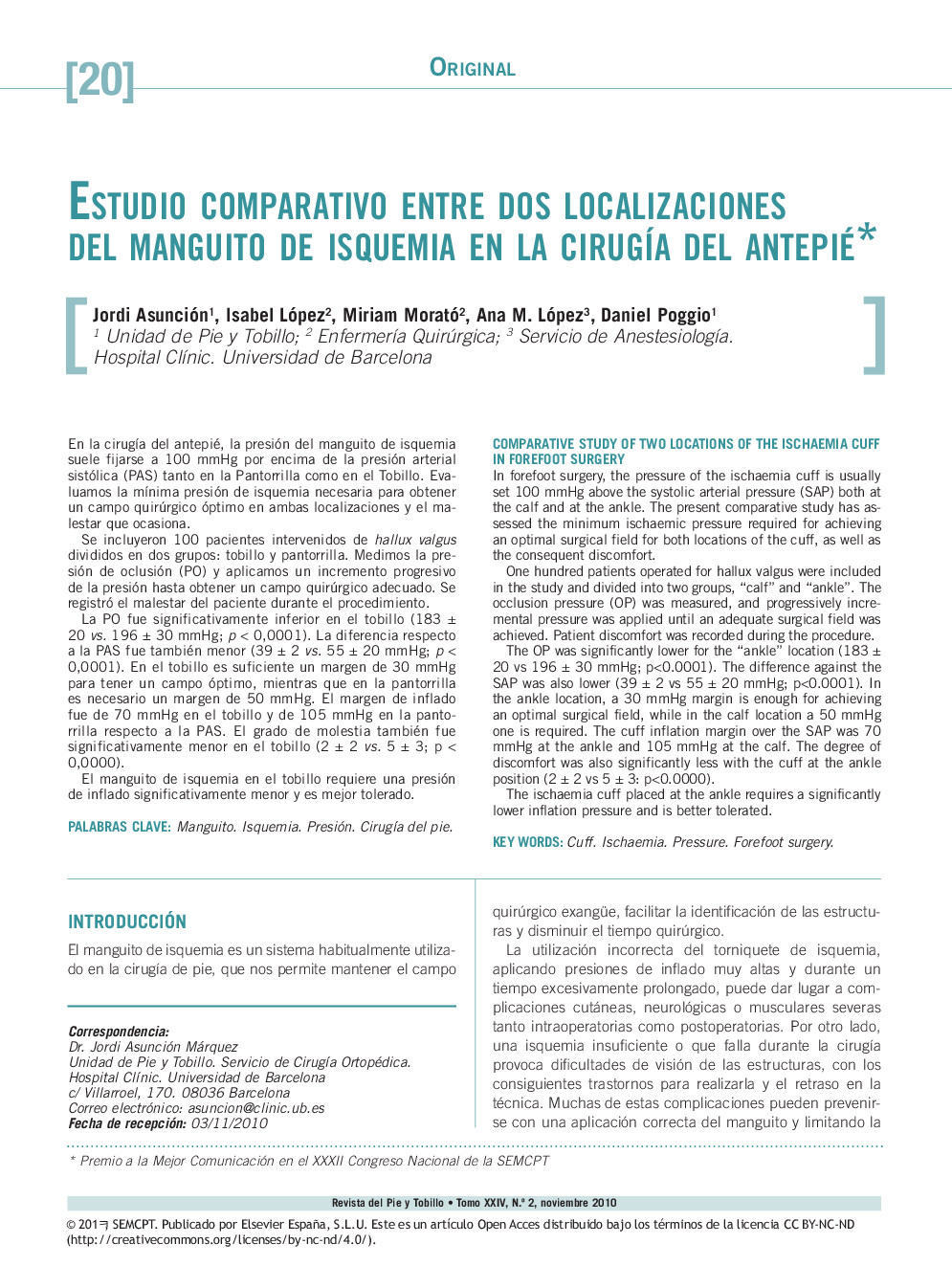| Article ID | Journal | Published Year | Pages | File Type |
|---|---|---|---|---|
| 4306306 | Revista del Pie y Tobillo | 2010 | 5 Pages |
En la cirugía del antepié, la presión del manguito de isquemia suele fijarse a 100 mmHg por encima de la presión arterial sistólica (PAS) tanto en la Pantorrilla como en el Tobillo. Evaluamos la mínima presión de isquemia necesaria para obtener un campo quirúrgico óptimo en ambas localizaciones y el malestar que ocasiona.Se incluyeron 100 pacientes intervenidos de hallux valgus divididos en dos grupos: tobillo y pantorrilla. Medimos la presión de oclusión (PO) y aplicamos un incremento progresivo de la presión hasta obtener un campo quirúrgico adecuado. Se registró el malestar del paciente durante el procedimiento.La PO fue significativamente inferior en el tobillo (183 ± 20 vs. 196 ± 30 mmHg; p < 0,0001). La diferencia respecto a la PAS fue también menor (39 ± 2 vs. 55 ± 20 mmHg; p < 0,0001). En el tobillo es suficiente un margen de 30 mmHg para tener un campo óptimo, mientras que en la pantorrilla es necesario un margen de 50 mmHg. El margen de inflado fue de 70 mmHg en el tobillo y de 105 mmHg en la pantorrilla respecto a la PAS. El grado de molestia también fue significativamente menor en el tobillo (2 ± 2 vs. 5 ± 3; p < 0,0000).El manguito de isquemia en el tobillo requiere una presión de inflado significativamente menor y es mejor tolerado.
In forefoot surgery, the pressure of the ischaemia cuff is usually set 100 mmHg above the systolic arterial pressure (SAP) both at the calf and at the ankle. The present comparative study has assessed the minimum ischaemic pressure required for achieving an optimal surgical field for both locations of the cuff, as well as the consequent discomfort.One hundred patients operated for hallux valgus were included in the study and divided into two groups, “calf” and “ankle”. The occlusion pressure (OP) was measured, and progressively incremental pressure was applied until an adequate surgical field was achieved. Patient discomfort was recorded during the procedure.The OP was significantly lower for the “ankle” location (183 ± 20 vs 196 ± 30 mmHg; p<0.0001). The difference against the SAP was also lower (39 ± 2 vs 55 ± 20 mmHg; p<0.0001). In the ankle location, a 30 mmHg margin is enough for achieving an optimal surgical field, while in the calf location a 50 mmHg one is required. The cuff inflation margin over the SAP was 70 mmHg at the ankle and 105 mmHg at the calf. The degree of discomfort was also significantly less with the cuff at the ankle position (2 ± 2 vs 5 ± 3: p<0.0000).The ischaemia cuff placed at the ankle requires a significantly lower inflation pressure and is better tolerated.
